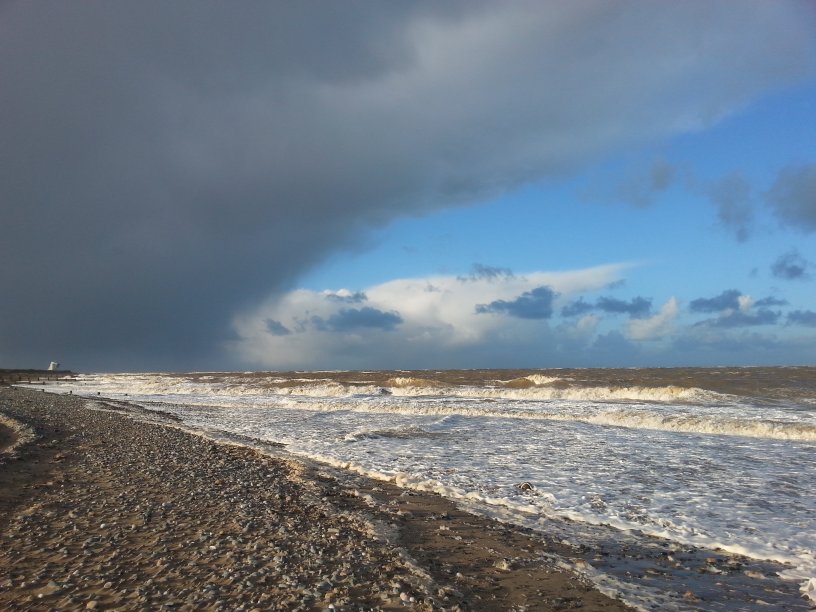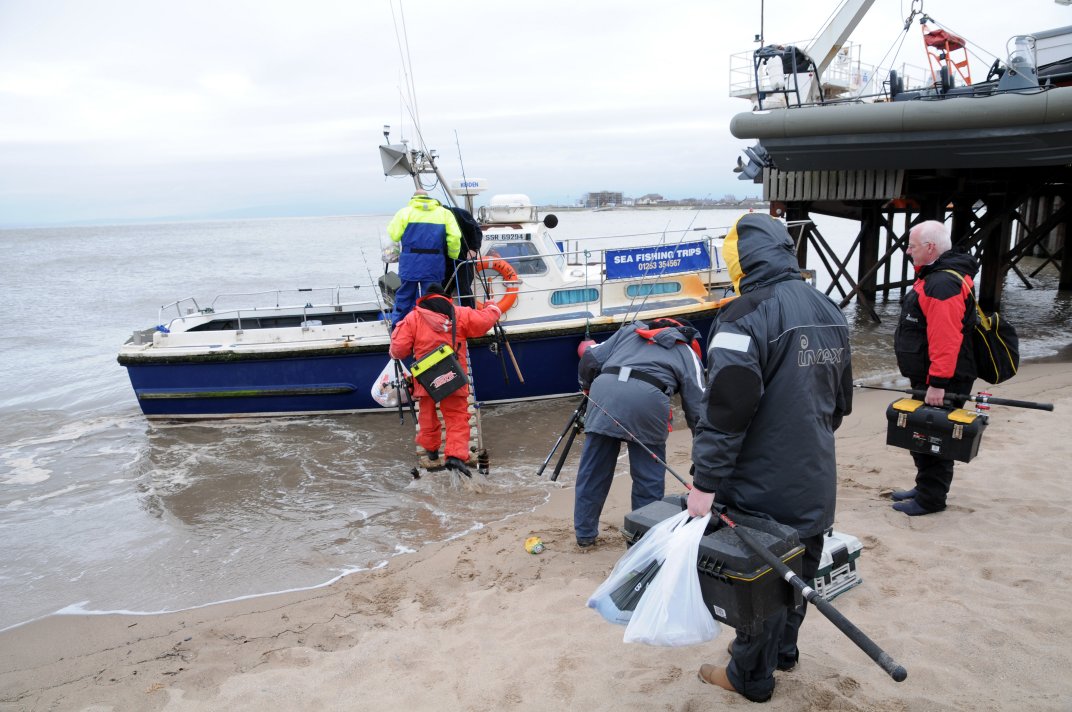The Reinvention of Whitby.

Britain's consistent number one charter fishing port. Quite an accolade, and quite a bold claim to make which takes some pretty strong backing up. I can think of a few venues that would most certainly be in the running, and right up there with them would have to be the North Sea port Whitby. I'm confident that few boat anglers would seriously argue with that. But, even a venue worthy of that level of status is not immune to its ups and downs on occasions as has happened in the past. The trick is in Whitby's case, that in climbing back up after one such a blip, it has completely re-invented itself in the process to the extent that anglers who fished it back in its halcyon days of the late 1970's through to the early 1990's would barely recognise the fishing in terms of approach. Tactically, it has had a total face lift, and one of the main architects here has been 'Sea Otter 2' skipper Paul Kilpatrick.
I remember fishing Whitby in the days when angling cobbles left the harbour here, and for that matter most other ports along the Yorkshire coast, loaded up with sacks of fresh mussels which the skipper would be relentlessly shelling for bait throughout the day. Long drifts over hard ground with bait were the order of the day back in those early years. Then the offshore wreck fishing exploded onto the scene with jiggers and muppets replacing bait, and huge Cod and Ling hauls, including records, replacing the more mundane catches on the mussel closer in. As a result, Whitby became a place of pilgrimage and rightly so as it added the Coalfish record to the Cod and Ling titles it had already claimed, and life in that corner of the North Sea had never looked more rosy.
The Full Article can be found HERE
The Weather Bomb.

In December 2014 the TV news was buzzing with the imminent arrival of what is officially termed in meteorological circles as a 'Weather Bomb', defined as a drop of 24 or more millibars in atmospheric pressure within any rolling 24 hour period. A drop so great as to potentially whip up winds and seas as bad as any hurricane, and for the western side of the UK and Ireland, in that regard, it didn't disappoint. Exposed ground wind speeds topped 100 miles an hour and Atlantic wave heights were reputedly in the order of 60 feet and more. In short, the entire western side of the British Isles took one hell of a pounding. So too did the fish by anglers along the Lancashire Coast in the run up to the height of the storm.
I've read that song birds can detect a tornado coming a good couple of days before it actually arrives which is something the weather experts with all their technology still can't do yet. Other animals too have been implicated, giving them the opportunity to get the hell out of it before any physical damage is done. I'm sure fish can also sense impending change, either for the better or the worse, which is what brings them in on to the beaches when they know a good onshore blow is going to churn anything concealed out of the sand or weed and open up new larders to them. They also seem to know when enough is enough and it's time to pull back or risk damage to themselves, which is exactly what happened, certainly to the Cod looking to gain a feeding advantage, along the Fylde Coast just before the full impact of the 'Weather Bomb' was felt.
The Full Article can be found HERE
Sheltered Plaice.

The first Plaice I caught this spring came on a day when I had to scrape the frost from the car windscreen just to get to Fleetwood. That fish came in sight of a back drop of snow topped fells fringing the northern Cumbrian edge of Morecambe Bay. That however is not the norm when I board Andy Bradbury's 'Blue Mink' with Plaice on my mind. Not so much in terms of the early start to the season. This last winter for example saw a few Plaice putting in a bonus show during every month of the year. I'm thinking more here of the weather, which along the Lancashire Coast tends to come mainly from the west which in March and April can feel pretty grim. Not only that, you can be in for a bit of a battering too. But in that regard, Fleetwood and Andy have a couple of aces up their sleeve to be dealt on those days when all hope appears to be lost for anyone wanting to fish from a boat, which is why I try wherever possible to board 'Blue Mink' on middle range tides with low water falling somewhere around the mid point of the trip. That way, within reason, the wind can do whatever it likes as all too often these days it does, so long as it doesn't go north of west.
It was just such a day when I jumped in with a party from Bury & District Sea Angling Club for another Plaice orientated trip. The wind was blowing a good westerly 5 and cool with it. Rain was also forecast for later in the day which thankfully didn't really materialize. Granted, it was a bit on the choppy side at first. But as I hinted earlier, the trick here is in the timing, because as the tide ebbs away, it exposes a mix of sand and mussel banks which define the channel all the way out to the Wyre Light forming a large salt-water lagoon with not enough in the way of size to allow any sort of sea to build up. There are two other bonus's here as well. The first is that whatever fish there are in that part of the bay are forced to drop back and become concentrated up until they get the chance to start working their way back up the flooding gullies to get around the mussel beds, the other being that it's possible to steam out of the narrow channel entrance around to Heysham and the Lune Channel which are themselves good Plaice holding areas, again using the drying banks for shelter.
The Full Article can be found HERE